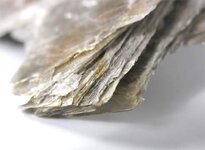- Messages
- 90
- Reactions
- 15
So I've begun to reload rifle rounds now, after starting off with pistol calibers. I bought the RCBS X die for .223 to use on my pile of LC 5.56 brass. It appears as though the necks have expanded too much outward? I set up the die on my Hornady LNL, by running it to the shell plate, then locking it down. Without the primer puncher/neck expander part in, the brass will not fully go into the sizing die. It will start to go in, but once that neck hits the neck part of the die, it stops. (Unless I'm supposed to just crank on the handle with all my might?) Looking at the brass that comes out, it starts to shrink the neck, but then it just stops after a 1/16 of an inch or so. I tried inserting a loaded LC 5.56 into the die, and it definitely goes a lot further in than the spent brass. And yes, I am using lube, Lyman MICA, dry powder lube.
Am I doing something wrong? Is the brass expanding too much after it leaves my chamber?
Am I doing something wrong? Is the brass expanding too much after it leaves my chamber?














